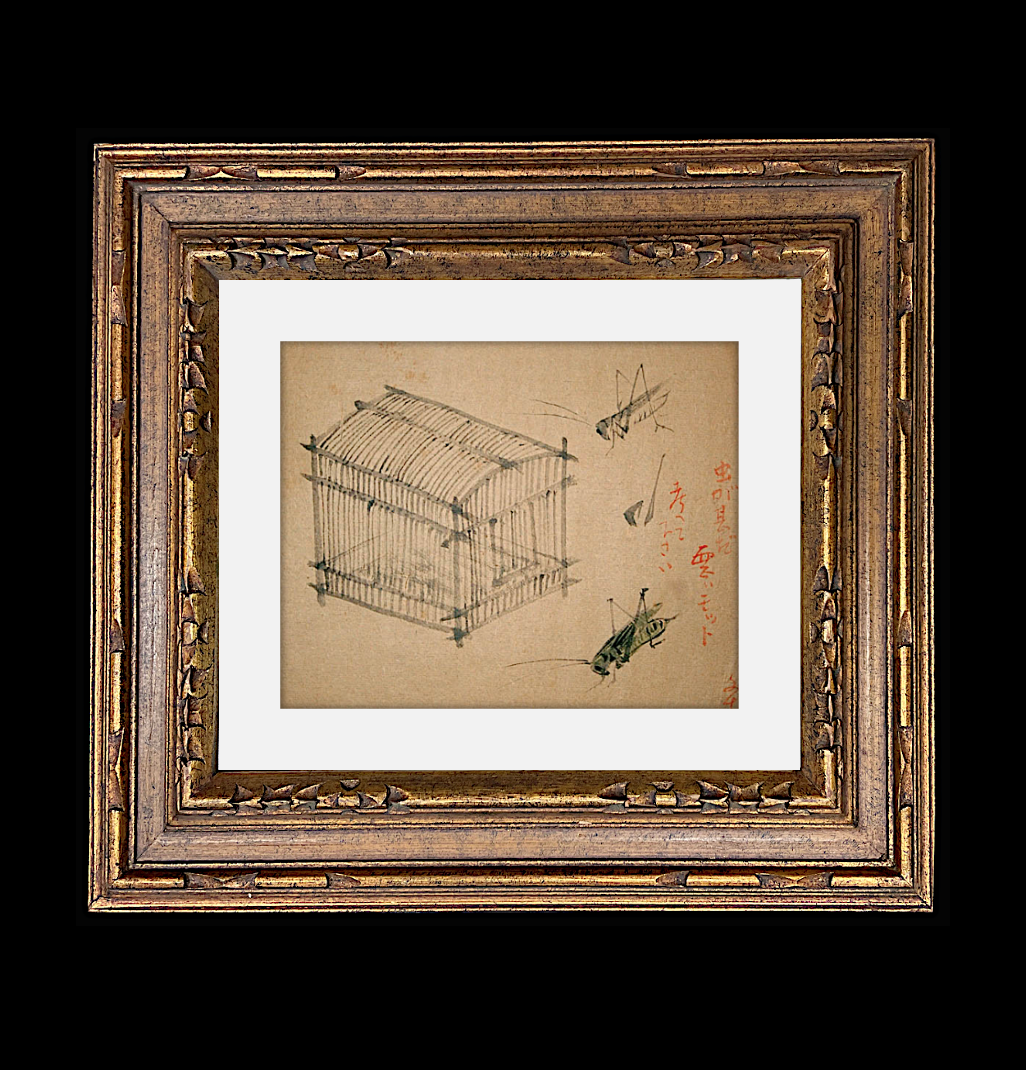

Title: Original Ink Painting Two Leaping Japanese Crickets And Cage
Shipping: $29.00
Artist: N/A
Period: 19th Century
History: Art
Origin: Central Asia > Japan
Condition: Very Good
Item Date: N/A
Item ID: 372
This 19th-century Japanese watercolor painting beautifully captures two leaping Japanese crickets and their cage. It is in excellent condition, showcasing exceptional detail that makes it ideal for display in a home gallery, museum, or gallery. The artwork is crafted on light watercolor-textured paper. This is a great example of an instructor demonstrating his skills to his students. The depiction of crickets in paintings carried a deeper spiritual meaning. In Japanese folklore, crickets were believed to possess spiritual qualities and were associated with good fortune. Their presence was thought to bring prosperity and ward off evil spirits, making them a popular subject in art during the 19th century. Overall, the portrayal of Japanese crickets and their cages in 19th-century paintings is a reflection of the intricate blend of nature, symbolism, and cultural values in Japanese art. The artworks not only captured the beauty of these tiny creatures but also conveyed profound messages about the impermanence of life and the pursuit of harmony and resilience in the face of transience.
In 19th-century Japanese art, the depiction of crickets and their cages held significant cultural and symbolic meanings. Crickets were revered for their distinctive chirping, which was associated with the arrival of autumn and considered a tranquil and harmonious sound in Japanese culture. The use of crickets in art often symbolized the transient nature of life, echoing the Buddhist concept of impermanence. Their short lifespan and melodious chirping served as a metaphor for the fleeting beauty of existence. Additionally, crickets were admired for their resilience and vitality, characteristics highly valued in Japanese society. The act of keeping crickets in cages was a popular pastime, especially among the aristocracy and samurai class. It became a refined form of entertainment and a status symbol. The cages themselves were intricately designed and often crafted with delicate materials, reflecting the aesthetic sensibilities of the time.
Link: http://en.wikipedia.org/wiki/Watercolor_painting
From the late 18th century through the 19th century, the market for printed books and domestic art contributed substantially to the growth of the medium. Watercolors were the used as the basic document from which collectible landscape or tourist engravings were developed, and handpainted watercolor originals or copies of famous paintings contributed to many upper class art portfolios. Satirical broadsides were extremely popular.
From the late 18th century through the 19th century, the market for printed books and domestic ar